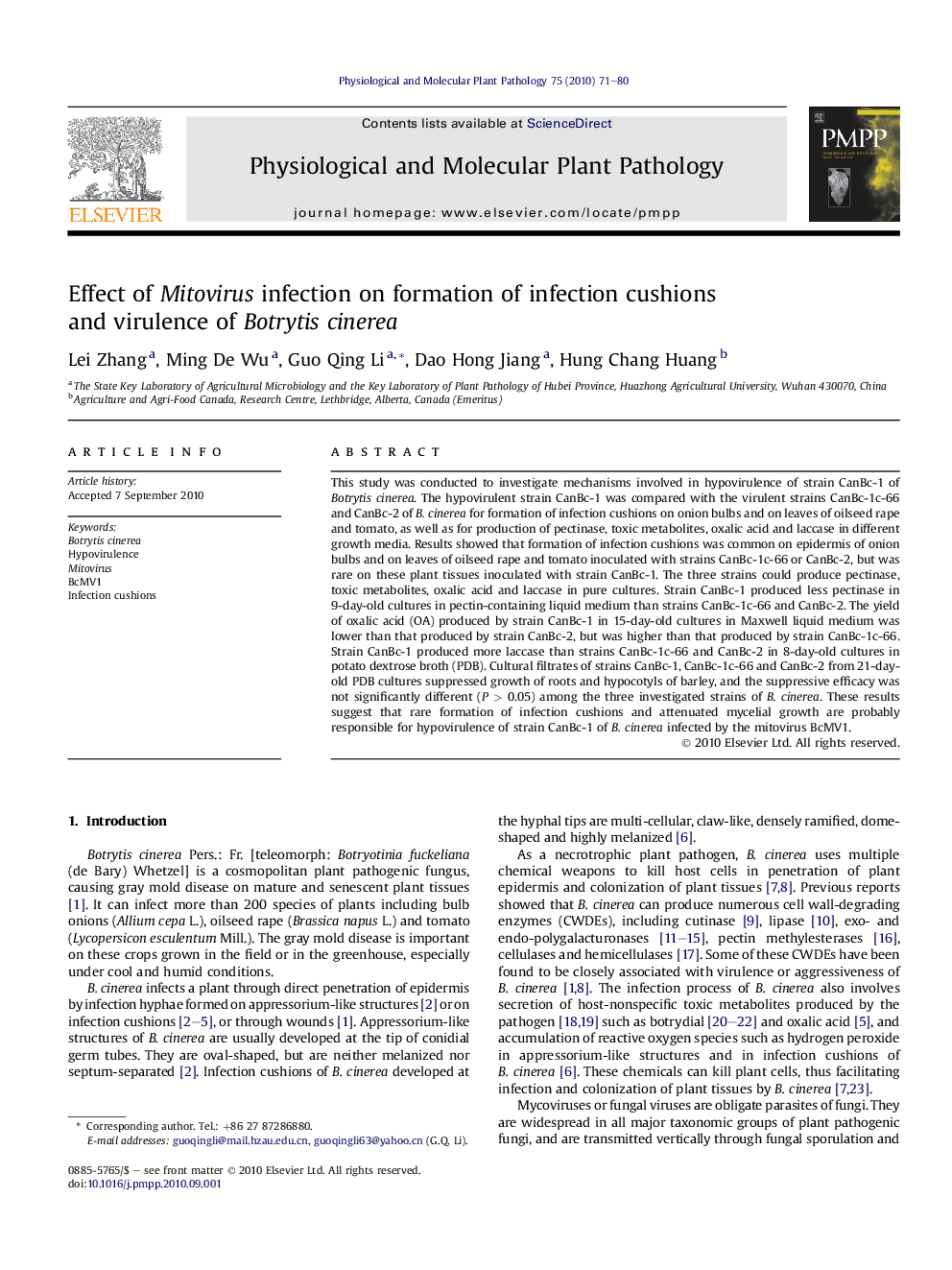| Article ID | Journal | Published Year | Pages | File Type |
|---|---|---|---|---|
| 2836623 | Physiological and Molecular Plant Pathology | 2010 | 10 Pages |
This study was conducted to investigate mechanisms involved in hypovirulence of strain CanBc-1 of Botrytis cinerea. The hypovirulent strain CanBc-1 was compared with the virulent strains CanBc-1c-66 and CanBc-2 of B. cinerea for formation of infection cushions on onion bulbs and on leaves of oilseed rape and tomato, as well as for production of pectinase, toxic metabolites, oxalic acid and laccase in different growth media. Results showed that formation of infection cushions was common on epidermis of onion bulbs and on leaves of oilseed rape and tomato inoculated with strains CanBc-1c-66 or CanBc-2, but was rare on these plant tissues inoculated with strain CanBc-1. The three strains could produce pectinase, toxic metabolites, oxalic acid and laccase in pure cultures. Strain CanBc-1 produced less pectinase in 9-day-old cultures in pectin-containing liquid medium than strains CanBc-1c-66 and CanBc-2. The yield of oxalic acid (OA) produced by strain CanBc-1 in 15-day-old cultures in Maxwell liquid medium was lower than that produced by strain CanBc-2, but was higher than that produced by strain CanBc-1c-66. Strain CanBc-1 produced more laccase than strains CanBc-1c-66 and CanBc-2 in 8-day-old cultures in potato dextrose broth (PDB). Cultural filtrates of strains CanBc-1, CanBc-1c-66 and CanBc-2 from 21-day-old PDB cultures suppressed growth of roots and hypocotyls of barley, and the suppressive efficacy was not significantly different (P > 0.05) among the three investigated strains of B. cinerea. These results suggest that rare formation of infection cushions and attenuated mycelial growth are probably responsible for hypovirulence of strain CanBc-1 of B. cinerea infected by the mitovirus BcMV1.
Research highlights► Strain CanBc-1 of Botrytis cinerea is infected with a species of mitovirus BcMV1. ► Attenuated mycelial growth and pathogenicity on leaves oilseed rape were found to be closely associated with failure to form infection cushions by strain CanBc-1. ► However, strain CanBc-1 can secrete virulent factors including pectinases, laccase, toxic metabolites and oxalate. ► Therefore, formation of infection cushions is a important factor affecting pathogenicity of B. cinerea.
